1933 Delage D8S Roadster
Coachwork by Carrosserie de Villars
Chassis no. 38021
Marque History
During its relatively brief 30-year history spanning 1905 and 1935, Delage was renowned for advanced design and engineering, brilliant racing success and unsurpassed quality. Racing success came quickly in 1906 and 1908, followed by a string of Grand Prix victories in 1912 and 1914. In 1914, Rene Thomas won with a Delage at Indianapolis during his first Indianapolis 500 start. Delage racing victories were interrupted only by WWI. In 1924, Thomas set the Land Speed Record at over 143 mph with a 10.5-liter, V12-powered Delage.
Throughout the 1920s, Delage dominated Grand Prix racing and was a virtual fixture in the winner’s circle. In 1927, Delage took five Grand Prix victories and the World Championship. Work with overhead valves, overhead camshafts, supercharging and a wide variety of four-, six-, eight- and 12-cylinder engines kept Delage at the cutting edge of racing and road-car development. Four-wheel brakes were adopted as standard equipment in 1918.
The brilliant four-liter, eight-cylinder D8, introduced in 1929, remains without doubt the marque’s crowning achievement today. With its shorter 130-inch wheelbase, lightened and lowered chassis, advanced suspension and 145-horsepower engine, the D8 was tailor-made to carry the most beautiful and elegant custom coachwork of the era. However, the Great Depression dramatically reduced demand for such costly bespoke cars as the D8. Delage lingered until 1935, when Louis Delage departed after falling out with his co-directors. Delage was taken over by Delahaye in late 1935, with the D8 design further massaged into the stunning D8-100 and D8-120, using Delahaye mechanical components and engine blocks. The last Delage chassis was built in 1953.
1933 Delage D8S Coupe Roadster, Chassis no. 38021
This specific vehicle is one of just 99 D8S chassis built in total. It was conceived as a design exercise, intended purely as a collaboration between Delage and custom-coachbuilder Carrosserie de Villars of Paris to showcase their capabilities at the world’s most prestigious concours events of the era. It is estimated that de Villars produced no more than 25 bodies per year.
This design represents perhaps the height of the Art Deco-influenced French design principles of the 1930s, with a multitude of flowing curves and a long hood that sweeps virtually unbroken from the radiator grille to extremely short-appearing cowl. The visible part of the cowl, while outwardly very short in appearance, is actually a large and strong structure that is cleverly hidden under the elongated hood, marking yet another radical and beautifully executed de Villars design feature.
The two-seat roadster body also features a set-back seating position to facilitate ease of entry and exit, as well as very interestingly shaped windows, intricately detailed and finished door jambs and concave bright body side moldings, which actually project inward into the body panels. The stunning de Villars bodywork is equally attractive with the body-color leather top up as well as down. All of these features combine to underscore the cost-as-no-object approach to the design and construction of this car.
Other unique features to this car include interior cooling vents mounted at the rear of the hood, with a beautifully engineered “fail-safe” mechanism ensuring that the vents are closed automatically, thereby preventing damage when either side of the hood is raised or lowered. The jack is mounted on the car’s steering box, and a wrench is conveniently attached directly to the fuel pump.
The race-bred four-liter, eight-cylinder engine of the D8S produces 145 bhp, some 25 more than standard. The overhead valvetrain, long a Delage feature, benefited from the company’s development work on military aircraft engines, on Louis Delage’s personal insistence. The shorter valve-springs of the D8S engine resisted breakage at higher rpm ranges. The D8S eight also used a Delage-only, aircraft-inspired system where warm engine oil was routed through the intake system, rather than water or coolant, to prevent performance loss due to carburetor icing. With its sophisticated chassis, the D8S provided performance on par with or perhaps better than the supercharged Bentleys of the era.
Provenance
This de Villars-bodied D8S, chassis 38021, was the star of the 1934 Paris Salon, held during October 1933. The press was equally impressed – laudatory commentaries were published with two photographs in L’Auto-Carrosserie and a coachbuilder’s sketch in La Carrosserie. In the fall of 1934, the D8S was also honored in Vu, one of France’s most prestigious magazines of the era, with a beautiful image of the Delage depicting it as “triumphant in any Concours d’Elegance.” In addition, 38021 was featured in the Delage sales catalog for 1934.
Next, the D8S was displayed in the front window of the Delage showroom on the Champs d’Elysée, as confirmed by a photograph of the car with a sign above it reading “Concours d’Elegance 1933.” Its first private owner was Aurelio Lerroux, the son of Spain’s then-Prime Minister, Alejandro Lerroux. The next owner was Sr. Rico, a friend of Aurelio Lerroux and the brother of Madrid’s then-Mayor, who had the car delivered to Spain in April 1935.
During the early 1940s, the D8S was often seen with Rosalia Gullon as its driver, who was a film star and the founder of a successful fashion company. It is unknown whether she bought the car or received it as a gift. Records show that 38021 was next owned by the Gran Hotel Velasquez in Madrid and likely used as VIP transportation for a number of years until the late 1950s, prior to having been placed into storage for some 40 years.
Restoration
Unearthed in the late 1990s, this virtual time capsule was found to be completely intact, retaining its original chassis, drivetrain, instruments and mechanical components. However, several body modifications were executed during the 1950s, as evidenced by very clear period photographs of the car. Among them, the fenders were reshaped, the bumpers were changed, and the original body moldings were converted from the original concave style, which projected into the body, to convex moldings.
Since RM Auto Restoration places an emphasis on preserving originality, our team painstakingly reversed the aforementioned modifications during the restoration of chassis 38021. The fenders were reshaped to their original profile, and the bumpers were returned to their original configuration. Thankfully, the car retained all the original structural woodwork.
All the body fittings are of the original style, and the interior has the same attention to detail as the rest of the car. Each doorjamb is fully clothed in chrome. The wooden interior trim, including the door caps and the top of the dash, feature the same concave treatment as the bright body side trim. The windows are raised and lowered by a unique rack-and-pinion system, with gears located all the way up and down the chromed window posts of the windows. This system is yet another example of the top-quality construction of the de Villars bodywork, ensuring perfect stability of the windows as they are raised or lowered.
Once completed, the D8S was refinished in its original white exterior color, which beautifully complements the de Villars body design. The chassis and brake drums are body color as well. In retrospect, the original color choice proved wise, since it highlights the chrome molding that runs from behind the top and along the doors to a stylish point beneath the cowl, perfectly matching the curved upper profile of the doors. Atop the hood surface, a pair of discreet but beautifully executed character lines converges in a V-shape to a point at the front of the hood and just behind the radiator shell. The white exterior color choice is crucial; had the car been finished in black, it would certainly be easily overlooked. However, in the light, the white exterior finish really brings the beautiful chrome body molding and hood character lines to the fore. This extraordinary coachbuilt Delage is truly a remarkable study of the close interaction of body design and color.
_01.jpg)
_02.jpg)
_03.jpg)
_04.jpg)
_05.jpg)
_06.jpg)
_07.jpg)
_08.jpg)
_09.jpg)
_10.jpg)
_11.jpg)
_12.jpg)
_13.jpg)
_14.jpg)
_15.jpg)
_16.jpg)
_17.jpg)
_18.jpg)
_19.jpg)
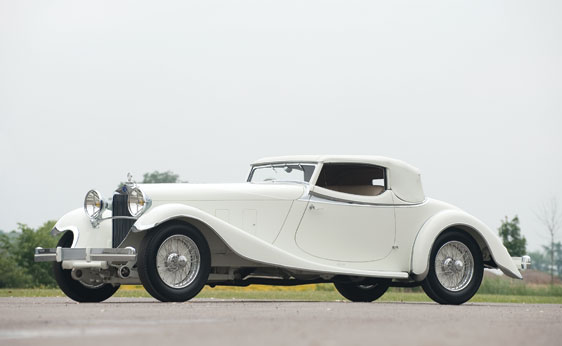

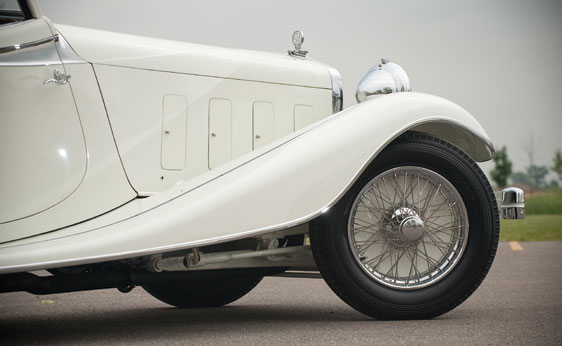

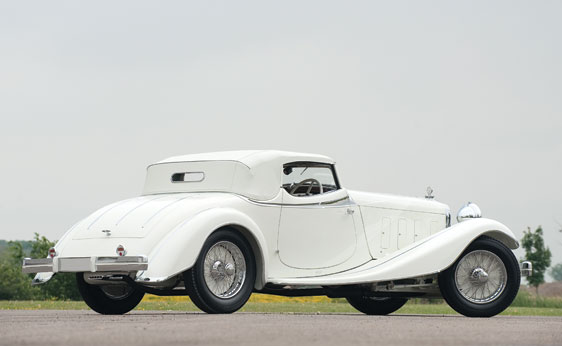

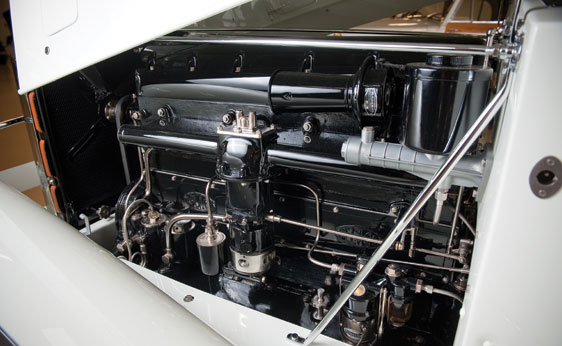

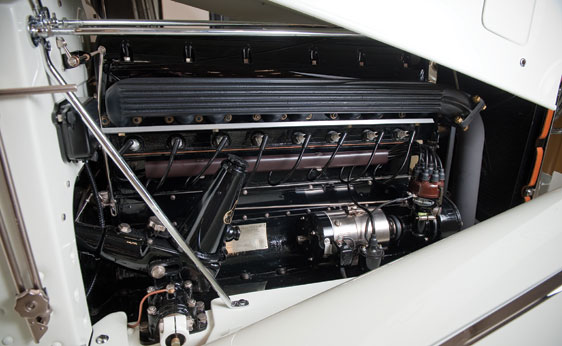

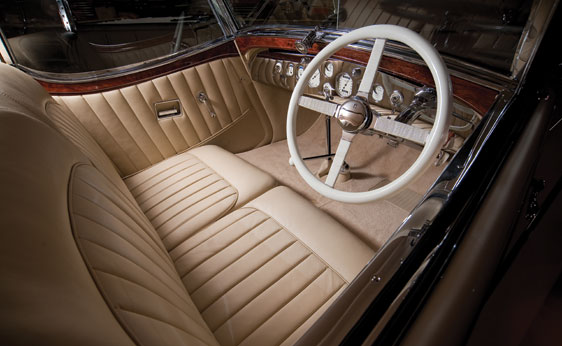

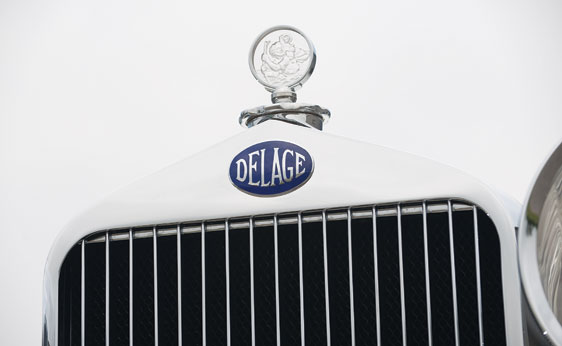

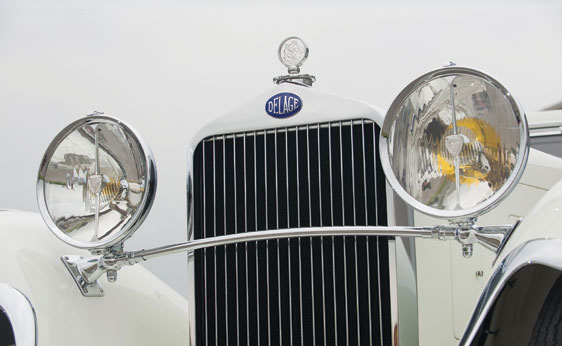

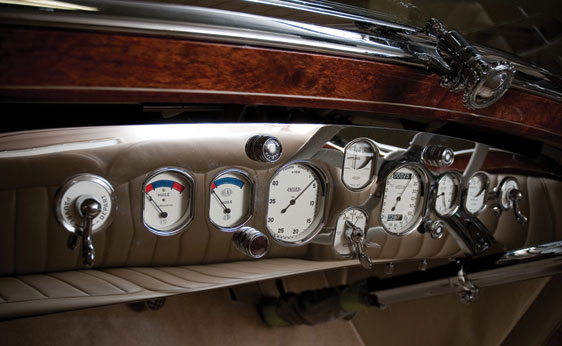

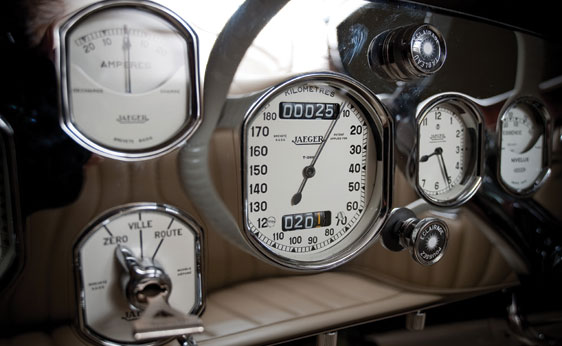



_01.jpg)
_02.jpg)
_03.jpg)
_04.jpg)
_05.jpg)
_06.jpg)
_07.jpg)
_08.jpg)
_09.jpg)
_10.jpg)
_11.jpg)
_12.jpg)
_13.jpg)
_14.jpg)
_15.jpg)
_16.jpg)
_17.jpg)
_18.jpg)
_19.jpg)





















